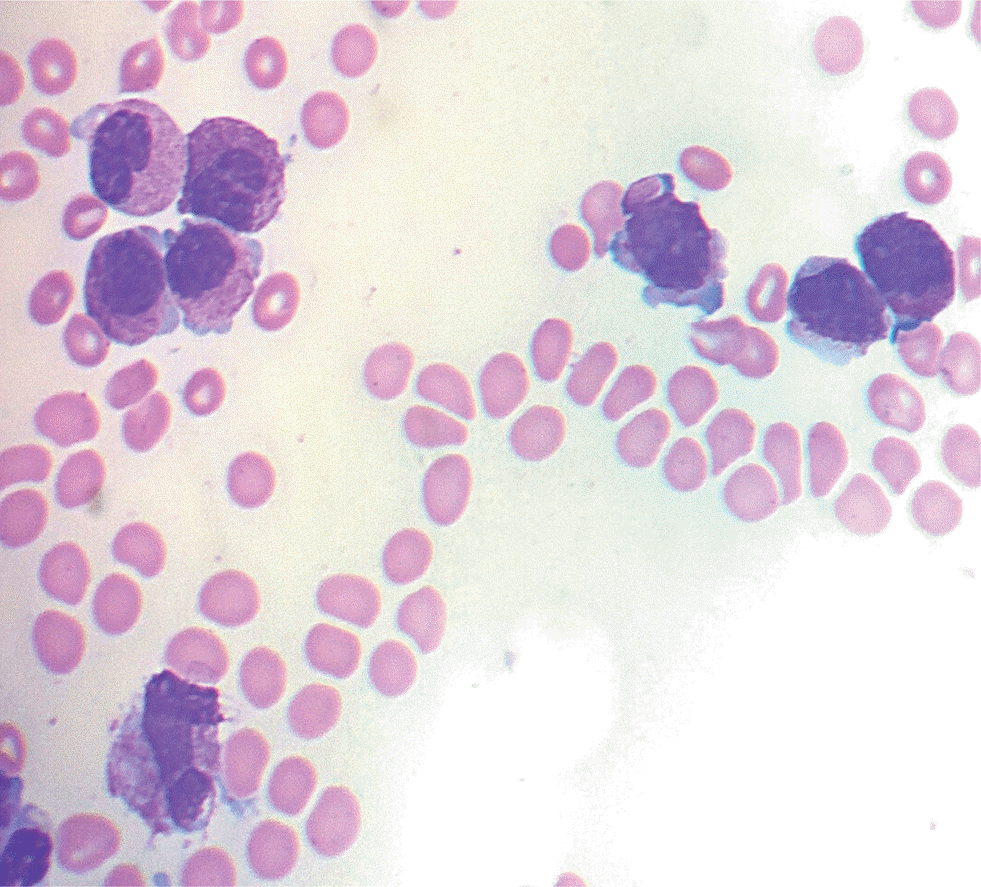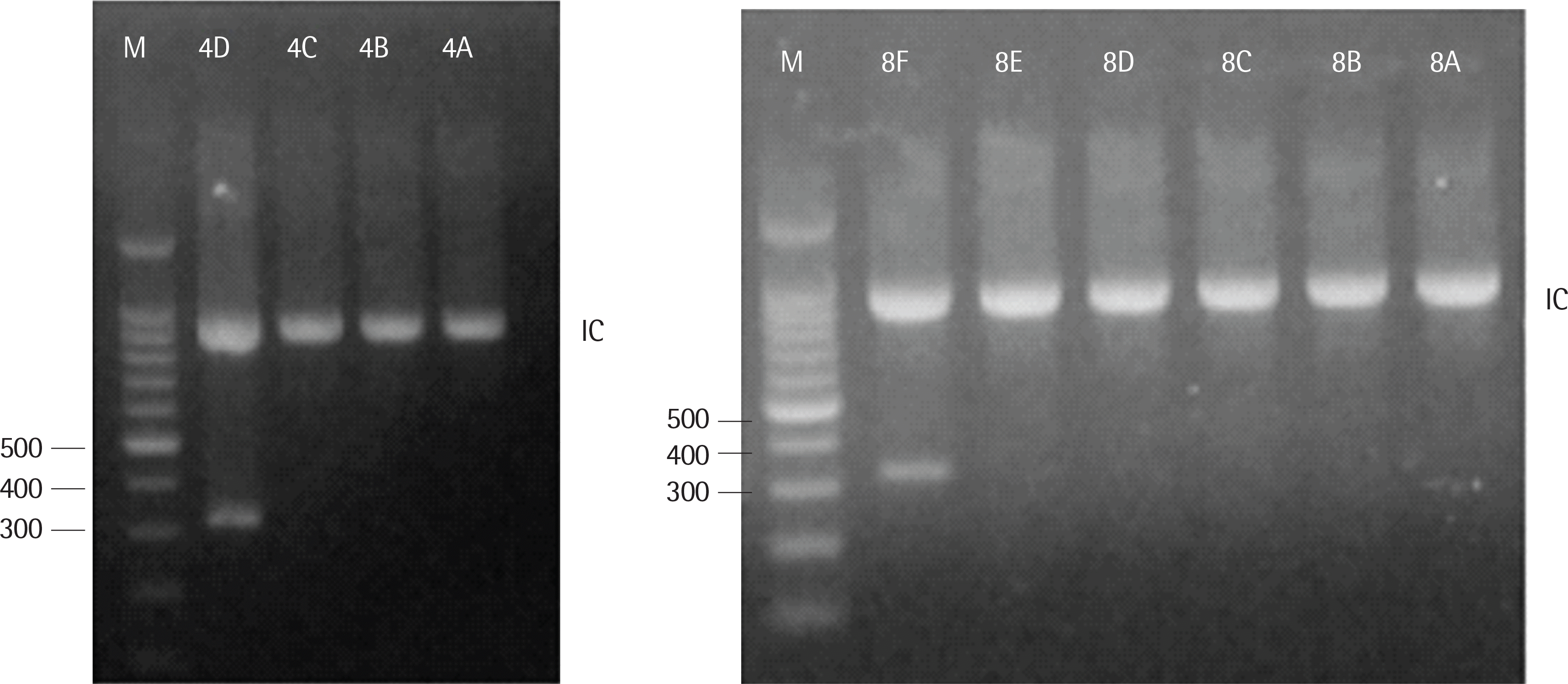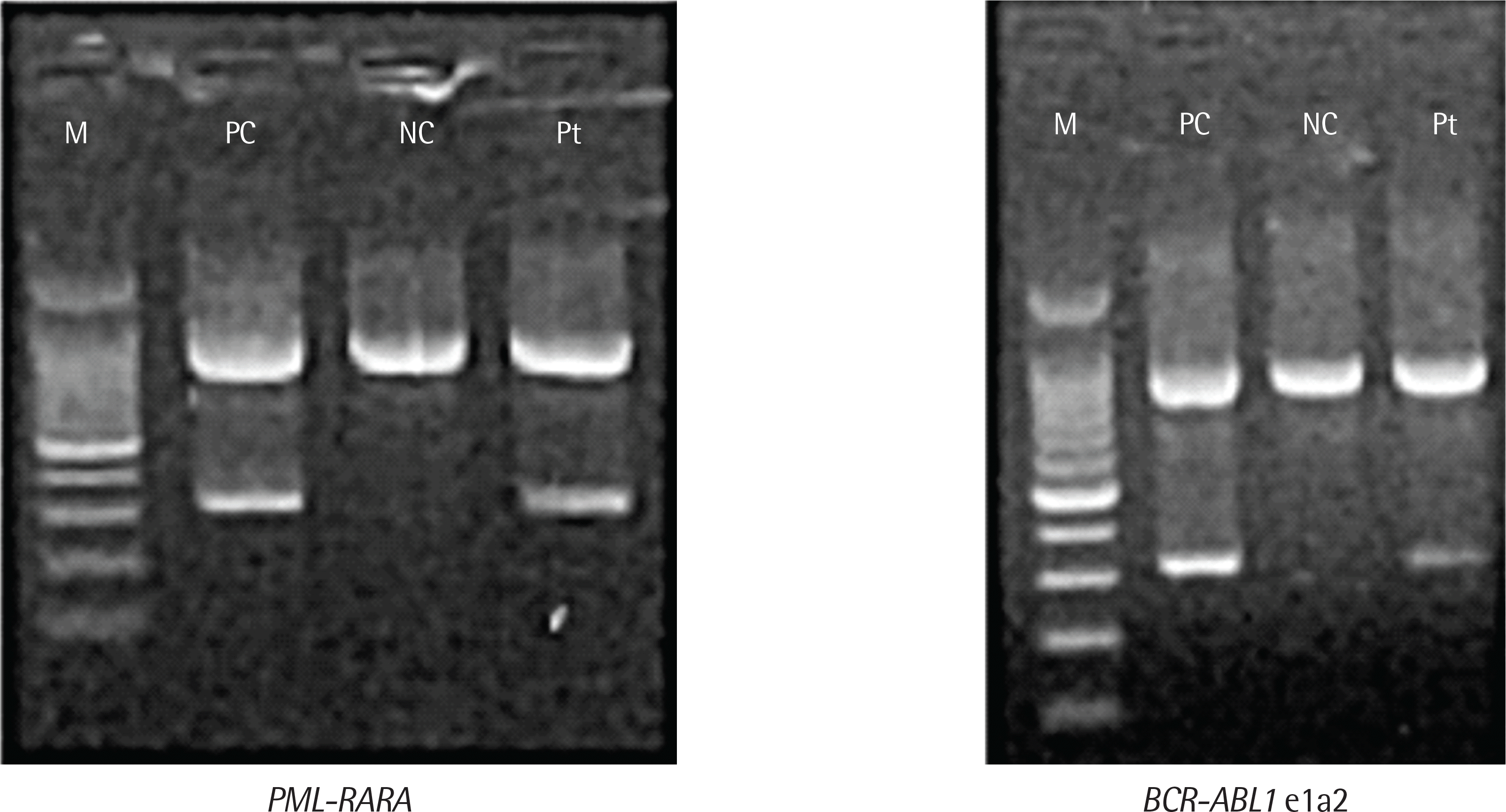Abstract
Acute promyelocytic leukemia (APL) is a distinct subtype of acute myeloid leukemia (AML) characterized by PML-RARA fusion and specific morphology. The BCR-ABL1 rearrangement is mainly observed in patients with chronic myeloid leukiemia (CML). However, it is also found in patients with acute lymphoblastic leukemia (ALL) and in a few patients with AML. However, it is very rarely observed in patients with APL. Here, we report a case of APL with t(15;17) and co-existence of PML-RARA and BCR-ABL1. Further study with more cases is warranted to find the right treatment and prognostic significance.
Go to : 
REFERENCES
1. de Thé H, Le Bras M, Lallemand-Breitenbach V. The cell biology of disease: acute promyelocytic leukemia, arsenic, and PML bodies. J Cell Biol. 2012; 198:11–21.
2. Yi-Kong K, Michael B, Bayard LP, Istvan M, David B, Mark P. Philadelphia chromosome positive myelodysplastic syndrome and acute myeloid leukemia—retrospective study and review of literature. Leuk Res. 2004; 28:579–86.
3. Tien HF, Wang CH, Chuang SM, Lee FY, Liu MC, Chen YC, et al. Characterization of Philadelphia-chromosome-positive acute leukemia by clinical, immunocytochemical, and gene analysis. Leukemia. 1992; 6:907–14.
4. Soupir CP, Vergilio JA, Dal Cin P, Muzikansky A, Kantarjian H, Jones D, et al. Philadelphia chromosome–positive acute myeloid leukemia: a rare aggressive leukemia with clinicopathologic features distinct from chronic myeloid leukemia in myeloid blast crisis. Am J Clin Pathol. 2007; 127:642–50.
5. Mao L, Wang H, Cheng Y, Wang Y, Chen Z, Jie J. Occurrence of t(15;17) (q22;q21) and t(9;22)(q34;q11) in a patient with acute promyelocytic leukemia. Leuk Lymphoma. 2009; 50:466–70.
6. Takahashi H, Sakai R, Hattori Y, Ohshima R, Hagihara M, Kuwabara H, et al. Biclonal co-existence of t(15;17) and t(9;22) chromosomal abnormalities in acute promyelocytic leukemia. Rinsho Ketsueki. 2011; 52:37–40.
7. Sun X, He Y, Mao C, Zhu L, Qin X, Huang S. BCR/ABL fusion gene detected in acute promyelocytic leukemia: a case study of clinical and laboratory results. Leuk Lymphoma. 2014; 55:435–8.

8. Zhang LJ, Gan YM, Yu L. Occurrence of BCR/ABL fusion gene in a patient with acute promyelocytic leukemia. Med Oncol. 2015; 32:382.

9. Grimwade D, Mistry AR, Solomon E, Guidez F. Acute promyelocytic leukemia: a paradigm for differentiation therapy. Cancer Treat Res. 2010; 145:219–35.

10. Wang ZY, Chen Z. Acute promyelocytic leukemia: from highly fatal to highly curable. Blood. 2008; 111:2505–15.

11. Ozemri Sag S, Yakut T, Gorukmez O, Gorukmez O, Ture M, Karkucak M, et al. Qualitative and quantitative evaluation of the BCR-ABL fusion gene in chronic myelogenous leukemia by fourescence in situ hybridization and molecular genetic methods. Genet Test Mol Biomarkers. 2015; 19:584–8.
12. Lundan T, Juvonen V, Mueller MC, Mustioki S, Lakkala T, Hochhaus A, et al. Comparison of bone marrow high mitotic index metaphase fuo-rescence in situ hybridization to peripheral blood and bone marrow real time quantitative polymerase chain reaction on the international scale for detecting residual disease in chronic myeloid leukemia. Hae-matologica. 2008; 93:178–85.
Go to : 
 | Fig. 1.Bone marrow aspiration smear shows several promyelocytes, including Auer rods and granules (Wright-Giemsa stain, ×1,000). |
 | Fig. 2.Agarose gel electrophoresis of the RT-PCR products. (A) PML-RARA fusion transcript (size: 325 bp) in lane 4D. (B) BCR-ABL1 e1a2- type fusion transcript (size: 320 bp) in lane 8F.Abbreviations: M, nucleic acid marked ladder; IC, internal control. |
 | Fig. 4.The follow up PCR is positive for both PML-RARA and BCR-ABL1. Abbreviations: M, nucleic acid marker ladder; PC, positive control; NC, negative control; Pt, patient. |
Table 1.
Comparison of published data on patients with BCR-ABL1 rearrangement in APL




 PDF
PDF ePub
ePub Citation
Citation Print
Print



 XML Download
XML Download